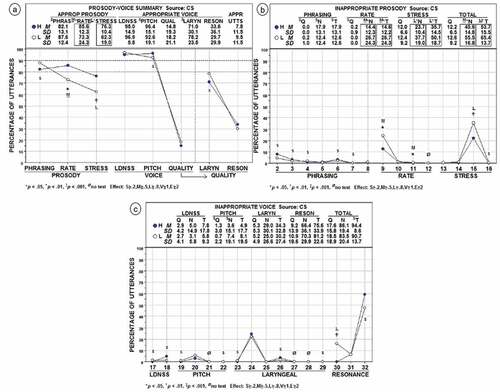Figures & data
Figure 1. Intelligibility Index (II) scores and ordinal intelligibility index (OII) classification findings for 50 adolescents with Down syndrome.
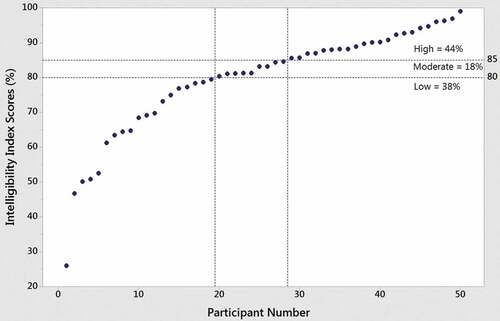
Table 1. Risk factors and intelligibility findings for 45 participants with Down syndrome.
Table 2. Intelligibility findings for 45 participants with Down syndrome classified by their speech and motor speech status.
Table 3. Intelligibility findings for 45 participants with Down syndrome classified by their motor speech status.
Figure 2. Subtypes of dysarthria as explanatory constructs for low intelligibility in adolescents with Down syndrome. Panel A includes the mean percentage scores on each of the dysarthria subtype indices for participants with high and low intelligibility, and panel B includes the mean percentile scores on each index for participants with high and low intelligibility.
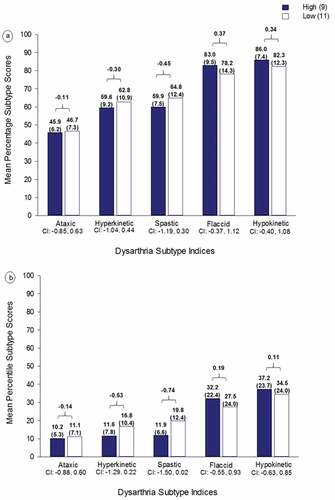
Figure 3. Comparative information on diagnostic classifications of motor speech status as an explanatory construct for reduced intelligibility in adolescents with Down syndrome. Figure 3a includes intelligibility findings for 45 speakers with DS in the original sample. Figure 3b includes intelligibility findings for 301 speakers with seven types of complex neurodevelopmental disorders (Shriberg, Strand, et al., Citation2019). Figure 3c includes intelligibility findings for 415 speakers with idiopathic Speech delay (Shriberg, Campbell, et al., Citation2019). No MSD: No Motor Speech disorder; SMD: Speech Motor delay; CD: Childhood Dysarthria; CAS: Childhood Apraxia of Speech: CD & CAS: Concurrent CD & CAS.
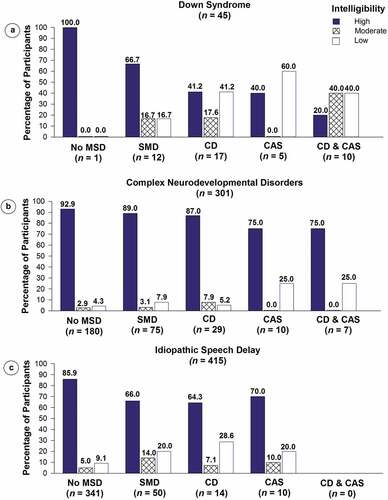
Figure 4. Four measures of consonant and vowel production in Conversational Speech (CS) in adolescents with Down syndrome. In each of the four panels, filled circles indicate participants with High (H) intelligibility; open circles indicate participants with Low (L) intelligibility. Statistically significant comparisons in the upper numeric section of each panel are indicated both by boxes around them and by effect size information.

Figure 5. Sibilant distortions and intelligibility in Conversational Speech (CS) in adolescents with Down syndrome. Filled circles indicate participants with High (H) intelligibility; open circles indicate participants with Low (L) intelligibility.
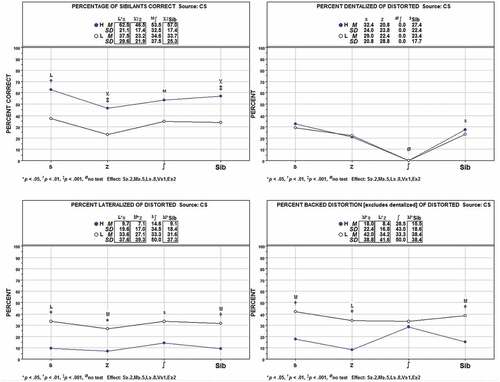
Figure 6. Inappropriate prosody and voice and intelligibility in Conversational Speech (CS) in adolescents with Down syndrome. Filled circles indicate participants with High (H) intelligibility; open circles indicate participants with Low (L) intelligibility. See text for description of the data in each panel.
